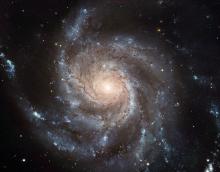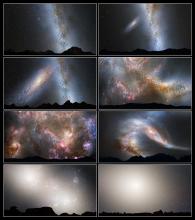Listen to today's episode of StarDate on the web the same day it airs in high-quality streaming audio without any extra ads or announcements. Choose a $8 one-month pass, or listen every day for a year for just $30.
You are here
Star of Interest
The star Mu Andromeda is bigger, heavier, and brighter than the Sun. That extra kick makes it visible to the unaided eye, even though it’s 130 light-years away.
The star also produces some odd radio signals. In fact, they’re among the most interesting picked up in the first year of Breakthrough Listen — a project that’s looking for signals from extraterrestrial civilizations.
The project is using radio telescopes in West Virginia and Australia. Earlier this year, it reported its observations of almost 700 stars. Each star was observed in one band of radio waves, with three scans of five minutes each.
The project recorded millions of radio “hits.” Almost all of them came from interference here on Earth. Only 11 stars produced radio signals that were considered “significant.” But none of them is thought to be a message from ET — they’re most likely odd signals from the stars or their environments.
Those initial results analyzed only a fraction of the observations obtained during Breakthrough Listen’s first year. The project’s going to run for a decade, and it recently teamed up with another radio telescope, in England. So it’ll take a long time to sift through all the data to see if another civilization is on the air.
Mu Andromeda is the brightest of the “significant” stars. It climbs into view in the northeast by around 11 p.m., above Mirach, Andromeda’s second-brightest star. Under fairly dark skies, it’s easy to pick out.
Script by Damond Benningfield






